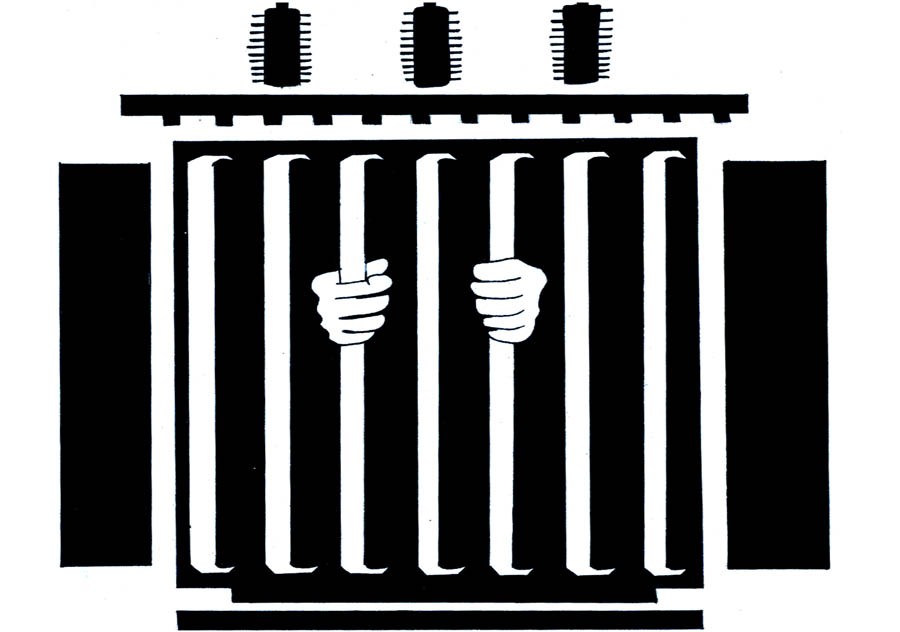
Poor transmission and distribution system is in a shambles and cannot sustain power load beyond a certain limit

Pakistan’s energy sector crisis is deepening with the increasing demand for electricity, piled-up circular debt, high cost of power generation, subsidies offered by the government, line losses, and more.
The transmission and distribution system, backbone of the electricity supply structure, is also in a shambles and cannot sustain power load beyond a certain limit.
So, when electricity generation goes above 1600 MW there is a strong likelihood of a breakdown. Frequent trippings is another permanent feature of the poor infrastructure.
The government is desperately working on increasing its energy generation capacity as if it is solution to all problems plaguing the energy sector.
It hardly ever talks about ways to permanently solve the circular debt issue, bring subsidies down, upgrade the infrastructure to reduce line losses, and improve governance. There is little realisation that increased generation capacity will not make much difference if other issues are not taken care of.
For example, if the cost of production remains the same or increases and pilferage is not plugged, the scale of circular debt and electricity theft is bound to increase in proportion to increase in the country’s generation capacity.
Economist Kaiser Bengali points out that financial constraints and poor governance are greater problems than power generation. "The situation cannot be improved unless the cost of production becomes less than the cost at which electricity is being supplied to consumers."
In addition to this, he says, the inability of the government to recover outstanding dues, stop power thefts, and bill different entities has aggravated the situation.
Read also: The curious case of K-Electric
Bengali cites the example of Federally Administered Tribal Areas (Fata) which consumes energy free of cost and cantonments where electricity is provided at a flat rate. In Balochistan, he adds, "farmers can pay Rs5,000 a month and operate tubewells throughout the day."
Ultimately, this affects the general consumers who have to make up for the losses caused due to the above-mentioned reasons. "This disparity will have to be removed to give relief to the masses across board," he says.
Bengali foresees worsening of the situation. The basis for his skepticism is the use of imported fuel -- Liquefied Natural Gas (LNG) and coal -- in plants being set up at the moment. "Though the electricity produced this way will be cheaper than that produced with furnace oil, it will disturb the balance of payment as this fuel will also have to be imported. Therefore, I suggest use of indigenous resources for power production shall be the corner stone of our policies."
Naveed Cheema, who has worked as a governance specialist in the ministry of finance, says there is an excuse that people opt for electricity theft because the prices have increased considerably. The government, he says, has hinted at reducing prices by adding electricity from cheaper sources to the energy basket but this will also not help much because the problem is quite complex.
He recalls that even the Federal Investigation Agency (FIA) and the National Accountability Bureau (NAB) were engaged by the government to eradicate electricity theft and recover outstanding dues but the drive ended after a short time. The same was the fate of initiatives like development of live dashboards for remote monitoring of electricity theft and recoveries of outstanding dues.
Cheema says lack of political will and resistance from those who benefit from lacunae in the system are the reasons why measures taken in the past have not yielded results. "The most viable solution is the installation of prepaid and/or smart metres that send their reading to cloud in real time. It is practically impossible to tamper these metres as any such attempt is detected immediately," he adds.
Circular debt has swelled again to around Rs500 billion. This is quite close to the level recorded in 2013 when several IPPs called sovereign guarantee while others decided to seek the intervention of the Supreme Court of Pakistan (SCP).
Sarim Sheikh, President and CEO, General Electric (GE) Pakistan, Iran and Afghanistan, says that the company can support the National Transmission and Despatch Company (NTDC) and Distribution Companies (DISCOs) in upgrading their transmission and distribution system with high performance equipment to enhance efficiency, availability and reliability of the system.
Besides, he says, "there are solutions like digitised smart grid systems that the GE can provide to control line losses and pilferage and improve the system’s performance. We have already implemented monitoring systems that are essential to track supply and demand with the NTDC at various DISCOs."
A source in NTDC dispels the impression that the system cannot sustain load beyond a limit and says that recently above 19000 MW electricity was inducted into it. He says the company is responsible for operation/maintenance of 220 KV to 500 KV lines whereas the 132 KV lines fall in the domain of DISCOs.
He says the National Electric Power Regulatory Authority (NEPRA) has allowed three per cent line losses at the maximum to NTDC but their losses are less than this. He claims the losses are too high at DISCOs’ level where maintenance is bad and theft is common. Unfortunately, he says, "the material is too old and there is leakage due to the high resistance electricity wires and wastage in worn-out transformers and grid stations."
He says that at the moment 58 projects have been planned at the cost of Rs800 billion to upgrade, repair and upgrade the existing electricity distribution network. "The installation of $1.6 billion Matiari-Faisalabad transmission as part of China-Pakistan Economic Corridor (CPEC) is one of these projects," he concludes.